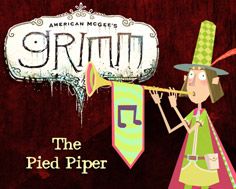Retro Replay Review
Gameplay
American McGee’s Grimm: The Pied Piper retains the series’ signature blend of platform action and environmental manipulation. Across six levels, players guide Grimm as he uses his darkening influence to twist the world around him. By touching objects and surfaces, Grimm corrupts bright, cheerful scenery into grim, shadowy landscapes, creating new pathways and revealing hidden secrets along the way.
(HEY YOU!! We hope you enjoy! We try not to run ads. So basically, this is a very expensive hobby running this site. Please consider joining us for updates, forums, and more. Network w/ us to make some cash or friends while retro gaming, and you can win some free retro games for posting. Okay, carry on 👍)
The level design emphasizes exploration and timing. As Grimm advances, he must lure rats or children into traps by strategically corrupting barricades, lampposts, and even the ground beneath his foes. This mechanic introduces a puzzle-like element—deciding which areas to darken in order to funnel enemies into his musical boat adds variety beyond simple platform jumping and enemy encounters.
Combat is minimal but satisfying. Grimm wields his pipe as both a tool and a weapon, stunning adversaries with haunting melodies before sealing them off. While the action can feel repetitive if overused, the interplay between platforming, light puzzle-solving, and the steady progression through increasingly twisted environments keeps the experience engaging from start to finish.
Graphics
The visual style of Grimm’s universe blends fairy-tale whimsy with macabre undertones. In The Pied Piper episode, the initial town setting bursts with cartoonish colors and lively details—flower boxes, bustling markets, and chattering townsfolk. Once Grimm’s dark touch takes hold, these elements bleed into deep purples, sickly greens, and smoky blacks, creating a stark contrast that underscores the game’s thematic shift.
Character design is expressively grotesque. Rats scurry with exaggerated motions, their beady eyes glowing ominously in the shadows. The Piper himself, though never seen directly, is everywhere through silhouette and sound—a clever choice that heightens player curiosity about his fate. Grimm’s own twisted silhouette, complete with ragged cloak and glowing eyes, looks more menacing than ever before.
Environment transitions feel seamless. As Grimm corrupts lanterns, hedges, and bridges, each object morphs fluidly between states, accompanied by eerie visual and audio cues. Occasional frame-rate dips during intense sequences are rare but noticeable; however, they do little to detract from the overall immersive quality of the game’s art direction.
Story
The Pied Piper narrative follows a familiar folktale, but American McGee’s dark reimagining adds layers of ambiguity and vengeance. The mayor’s betrayal—refusing to pay the Piper for ridding the city of rats—sets off a chain of events that turns charming melody into a weapon of dread. Grimm’s mission to learn the fate of the missing children injects the tale with personal stakes, differentiating it from previous, more straightforward Grimm episodes.
Rather than retell every detail of the legend, the game focuses on transformational moments. As Grimm corrupts each environment, snippets of the Piper’s story are revealed through environmental storytelling: tattered posters flutter, silent bells ring in deserted streets, and darkened children’s toys hint at the tragedy left unresolved. This approach invites players to piece together the darker ending for themselves.
While faithful to the source material’s themes of greed and revenge, the decision to leave the children’s ultimate fate ambiguous may frustrate some. However, this narrative gap encourages discussion and personal interpretation, and it aligns with the Grimm series’ penchant for unsettling, open-ended conclusions. Players intrigued by moral gray areas will appreciate how the story unfolds in pared-down but evocative vignettes.
Overall Experience
American McGee’s Grimm: The Pied Piper stands out as a compact yet compelling chapter in the Grimm anthology. Its six levels deliver a satisfying mix of platforming, light puzzle mechanics, and environmental storytelling. While the gameplay loop is simple, the dark fantasy atmosphere and occasional strategic challenges provide enough depth to keep players engaged through to the end.
The game’s strong point lies in its art direction and mood. The fluid transformations from cheerful townscapes to corrupted nightmares highlight the central theme of innocence lost. Audio design—especially the haunting pipe melodies and ambient whispers—complements the visuals, creating an immersive world that lingers in the mind long after completion.
Though brief, The Pied Piper offers a memorable twist on a classic folktale, and it raises intriguing questions about justice and retribution. Potential buyers seeking a dark, stylized platformer with strong narrative flavor should find much to enjoy. Those looking for deeper combat systems or extended playtime may feel the experience is too short, but for a focused, atmospheric romp through a twisted fairy tale, this episode delivers.
 Retro Replay Retro Replay gaming reviews, news, emulation, geek stuff and more!
Retro Replay Retro Replay gaming reviews, news, emulation, geek stuff and more!




Reviews
There are no reviews yet.